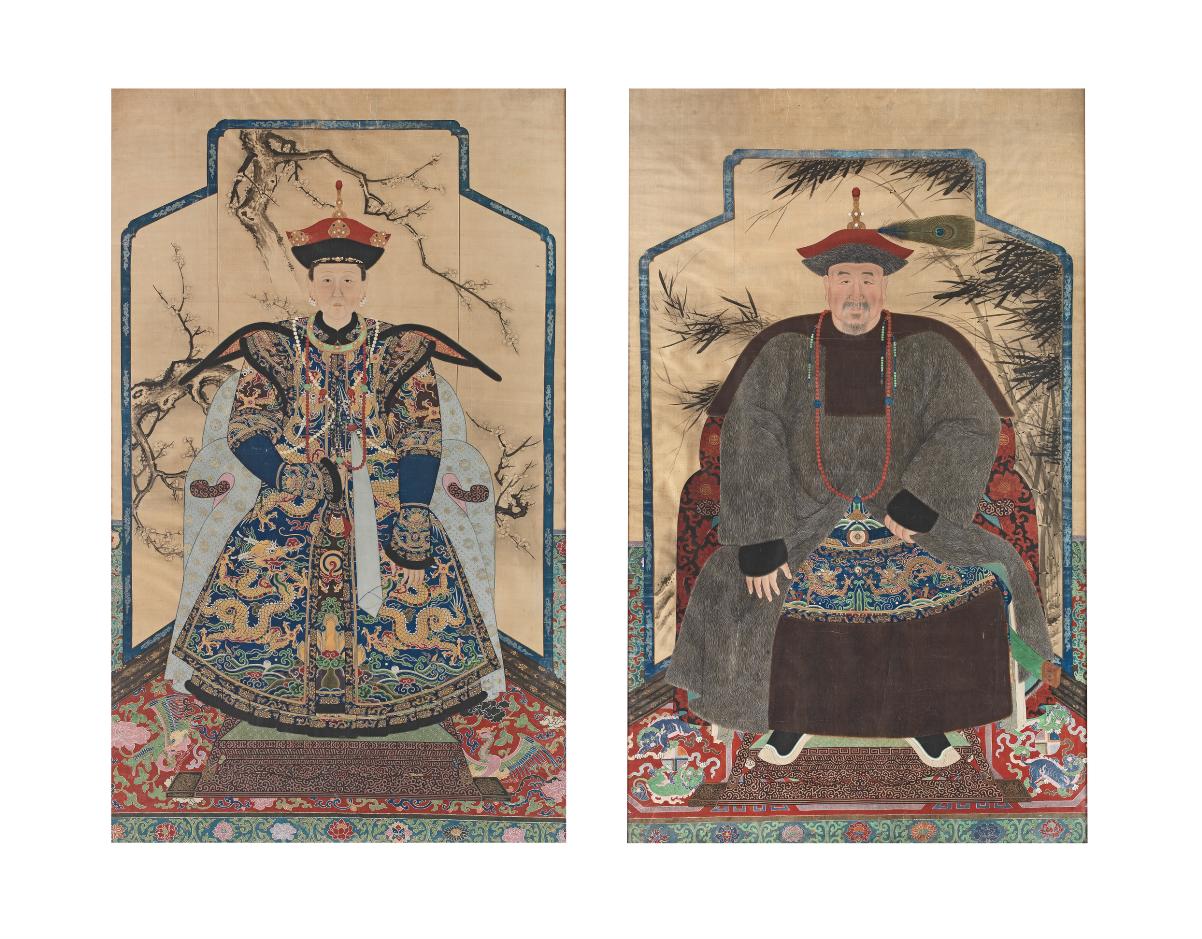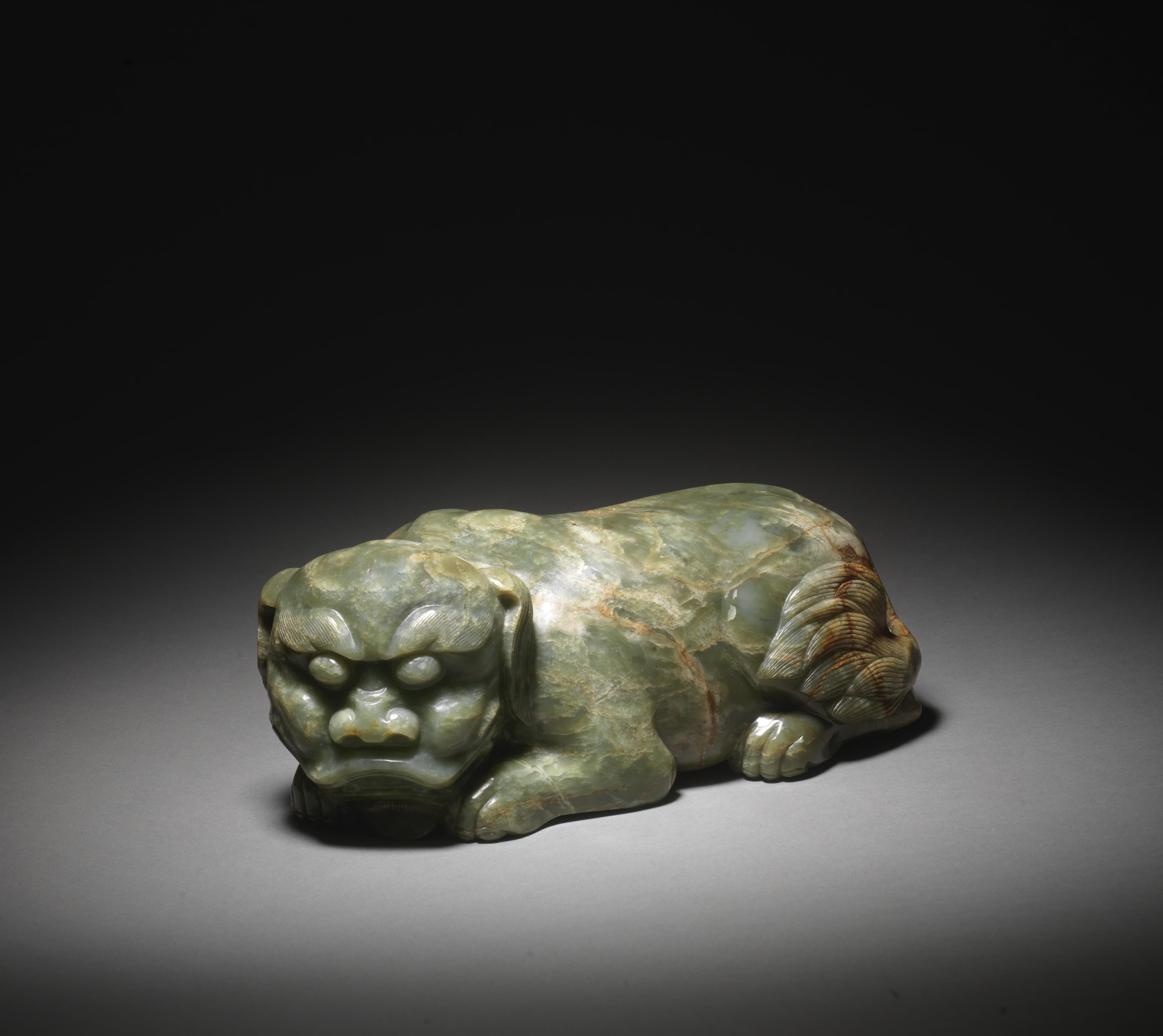Wood, blue trade beads. Early 19th century. 29 cm. An exceptional rare and fine example of a large Wandamen Korwar. Used as oracles, these Korwar figures were sculpted and used by ritual experts to transfer the spirit to the other world. The carving of a Korwar figure and its unique motifs involve a complex process which requires both spiritual and technical mastery. Korwar figures can be recognized by their distinctive large heads, flowing limbs, arrow-like noses and elegant open work carvings. The eyes of this Korwar are embedded with blue glass beads, as can be seen often in early Korwar figures. Shields and snakes serve as symbols of protection and resurrection. As important as Korwar figures were in society, if it failed to protect or to give favorable readings, the owner would sell or destroy it. (VJ) Provenance: Collected by Dresden museum director-curator Adolf Meyer during his 1873 expedition; Exhibited in the Dresden Museum; Leipzig Museum collection; Ana and Antonio Casanovas; Private collection. Published: 'Ahnenfiguren von der Geelvinkbai, Holländisch Neuguinea' by Oskar Nuoffer, Leipzig 1908, Dresden Museum. Comes with the original publication. Cf.: For a similar example from the Wandamen area see 'Korwars and Korwar style: Art and Ancestor Worship in North-West New Guinea', by Theodorus Petrus van Baaren, The Hague 1968.
Wood, blue trade beads. Early 19th century. 29 cm. An exceptional rare and fine example of a large Wandamen Korwar. Used as oracles, these Korwar figures were sculpted and used by ritual experts to transfer the spirit to the other world. The carving of a Korwar figure and its unique motifs involve a complex process which requires both spiritual and technical mastery. Korwar figures can be recognized by their distinctive large heads, flowing limbs, arrow-like noses and elegant open work carvings. The eyes of this Korwar are embedded with blue glass beads, as can be seen often in early Korwar figures. Shields and snakes serve as symbols of protection and resurrection. As important as Korwar figures were in society, if it failed to protect or to give favorable readings, the owner would sell or destroy it. (VJ) Provenance: Collected by Dresden museum director-curator Adolf Meyer during his 1873 expedition; Exhibited in the Dresden Museum; Leipzig Museum collection; Ana and Antonio Casanovas; Private collection. Published: 'Ahnenfiguren von der Geelvinkbai, Holländisch Neuguinea' by Oskar Nuoffer, Leipzig 1908, Dresden Museum. Comes with the original publication. Cf.: For a similar example from the Wandamen area see 'Korwars and Korwar style: Art and Ancestor Worship in North-West New Guinea', by Theodorus Petrus van Baaren, The Hague 1968.



.jpg)
.jpg)
.jpg)
.jpg?w=400)



Try LotSearch and its premium features for 7 days - without any costs!
Be notified automatically about new items in upcoming auctions.
Create an alert